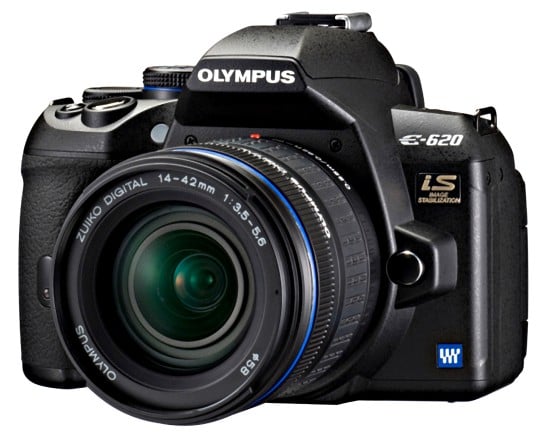Olympus E-620 Digital SLR Review
Introduction


The Olympus E-620 incorporates a Four Thirds lens mount and is compatible with a range of Four Thirds lenses from manufacturers such as Olympus, Sigma, and Panasonic / Leica. These lenses are designed for DSLR use and many offer superb quality. One of the best parts about the Four Thirds system is that it allows manufacturers to make smaller camera bodies. Indeed, the Olympus E-620 is one of the smallest DSLRs we’ve shot with. The camera’s size doesn’t result in a lighter weight, however—in reality, the E-620 weighs about the same as other entry-level DSLRs.
Keep in mind that since the E-620 uses the Four Thirds system, there’s a 2x digital crop factor. This means the equivalent 35mm spec is doubled. Put into numbers, this means the supplied 14-42mm kit lens is actually a 28-84mm lens, and so on. By comparison, Canon’s and Nikon’s APS-C DSLRs have 1.6x and 1.5x multipliers, respectively. Olympus’ 2x crop factor isn’t necessarily a bad thing, but it is something wide-angle buffs will want to keep in mind.

At the time of this writing, the E-620 is the smallest body to offer built-in Image Stabilization. What’s great about in-body stabilization is that it works with any lens you attach—new, old, prime, or zoom—so you won’t be paying for this feature with future lens purchases as you would with manufacturers such as Canon or Nikon who build the feature into each lens. The downside with in-body stabilization is that you won’t get to see the stabilizing effect through the viewfinder.






